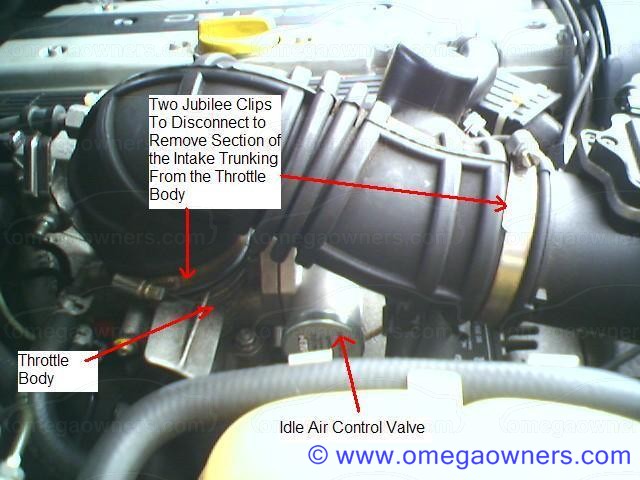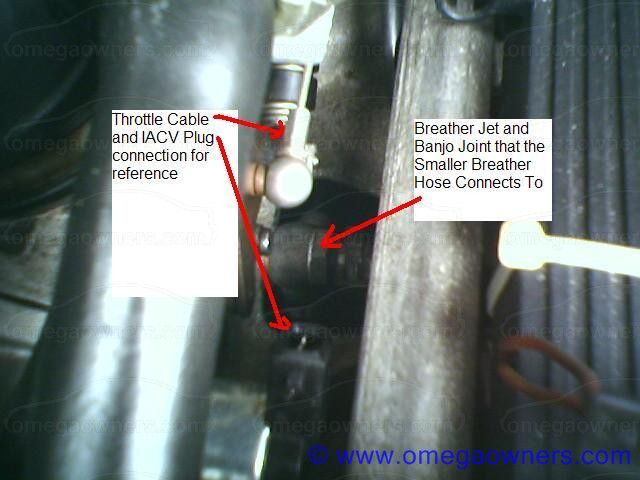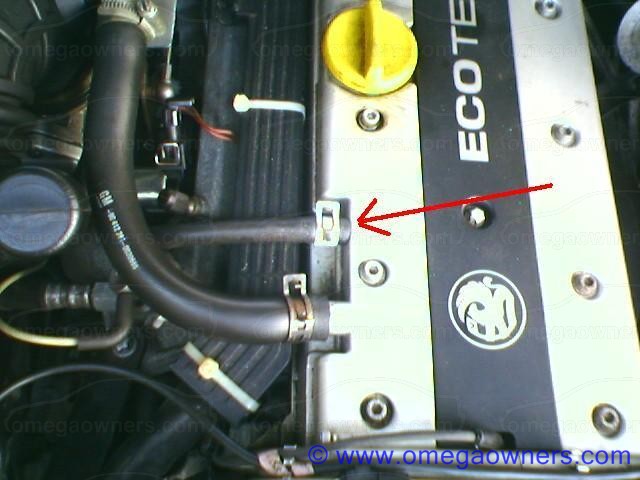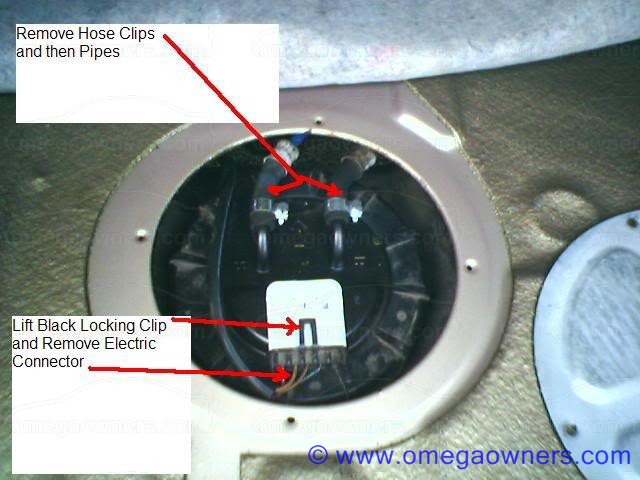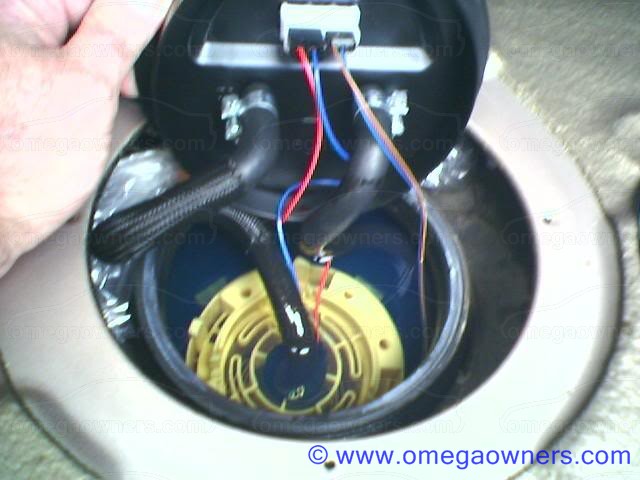1
Maintenance Guides / Re: How To Clean Your 2.0L IACV and Breather Jet
« on: 02 November 2007, 12:52:22 »
Now we come to the IACV.
Have a look at the following pictures. The exploded view was kindly
provided by 'Abiton', who took one apart to see what made it tick.

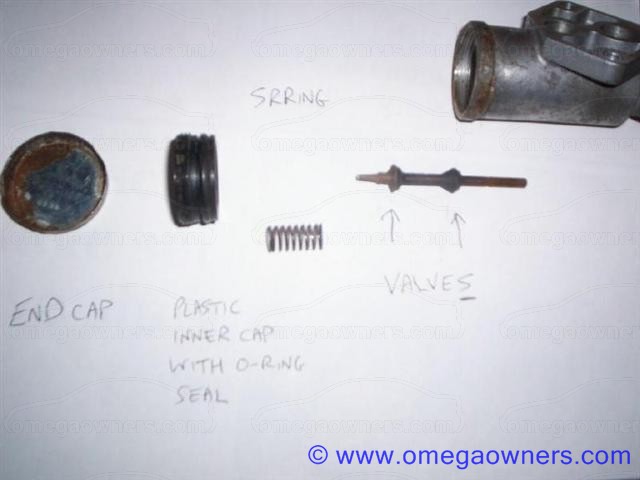
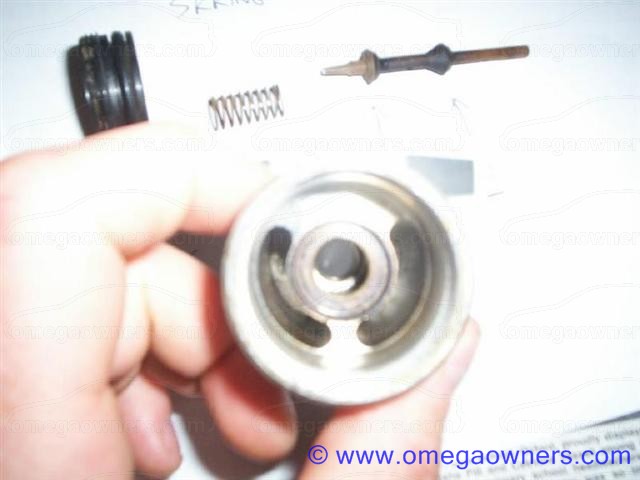
The Inlet hole to the IACV is deeper than the Outlet. This is because
it provides air to the hidden air passage ways that pass to the end
of the IACV and to the second of the Twin Valves.
Look at the exploded view and you will see the 2 kidney shaped slots
that pass through the valve to pass the air to the second valve.
It's these airways and the second valve that get coated and blocked
with oil.
Undo the 2 screws that secure the electric motor to the valve,
and slide the motor off the valve stem.
Fill the valve with carb cleaner or fuel. Ensure that you pour
or spray it down the inlet hole, so that it passes through the
hidden airways and down to the second valve down by the
flat end of the valve. Allow it to soak and agitate it by covering
all 3 holes (gloved fingers and thumbs works for me).
Stand it on its flat end with the inlet and outlet holes facing you.
Tilt it slowly away from you so that the cleaner and muck flows
away from the second valve, washes out the hidden airways, and
out via the end where you've removed the Electric Motor from.
This will ensure that you don't wash all the crap down to, and
block, the second valve orifice.
Repeat until clean and then thoroughly dry.
Put a little electric lube or vaseline on the shiny bit of the valve stem
that protrudes into the motor. Do not lube any other part of the valve!!
The only contact point on the valve is the stem that protrudes into the
motor. Any lubing anywhere else is not only pointless, but will dry onto
the valve body and act like sticky flypaper that will attract crud like ****
to a blanket.
Reassemble the valve. Spin the valve stem until you can see a small hole
in the valve plastic coating in the hole nearest the flat end of the valve.
Put a thin 'Podger' in the hole and draw the valve back towards the flat end
against the spring pressure.
When you release the 'Podger' from the small hole in the valve stem check
that the spring pressure returns the valve fully back towards the motor end.
Check this by trying to move the valve towards the motor end. There shouldn't
be any movement.
If it doesn't return, repeat by cleaning and lubing the valve stem inside
the motor bit until it does.
If you wish, clean your throttle body. That has already been detailed
by other good folk on this forum.
You may also wish to remove and clean the other breather hose, on the
back passenger side of the engine, that connects between your crankcase
and cam cover. This has also been covered on this forum. Some also
fit a flame trap mod to this hose.
When you refit everything, ensure that you use a new gasket between
the IACV and the throttle body. If this gasket leaks internally, or draws
in air externally, your ECU will not be able to control your IACV.
This will give all sorts of defects from, high, low, or fluctuating RPM.
Now enjoy your smooth idling, non stalling, Omega limo!
Hope this helps, but remember that this is just one reason
that can cause your Omega to stall. A failing Crank Sensor, for instance,
can give similar cutting out symptoms.
Have a look at the following pictures. The exploded view was kindly
provided by 'Abiton', who took one apart to see what made it tick.



The Inlet hole to the IACV is deeper than the Outlet. This is because
it provides air to the hidden air passage ways that pass to the end
of the IACV and to the second of the Twin Valves.
Look at the exploded view and you will see the 2 kidney shaped slots
that pass through the valve to pass the air to the second valve.
It's these airways and the second valve that get coated and blocked
with oil.
Undo the 2 screws that secure the electric motor to the valve,
and slide the motor off the valve stem.
Fill the valve with carb cleaner or fuel. Ensure that you pour
or spray it down the inlet hole, so that it passes through the
hidden airways and down to the second valve down by the
flat end of the valve. Allow it to soak and agitate it by covering
all 3 holes (gloved fingers and thumbs works for me).
Stand it on its flat end with the inlet and outlet holes facing you.
Tilt it slowly away from you so that the cleaner and muck flows
away from the second valve, washes out the hidden airways, and
out via the end where you've removed the Electric Motor from.
This will ensure that you don't wash all the crap down to, and
block, the second valve orifice.
Repeat until clean and then thoroughly dry.
Put a little electric lube or vaseline on the shiny bit of the valve stem
that protrudes into the motor. Do not lube any other part of the valve!!
The only contact point on the valve is the stem that protrudes into the
motor. Any lubing anywhere else is not only pointless, but will dry onto
the valve body and act like sticky flypaper that will attract crud like ****
to a blanket.
Reassemble the valve. Spin the valve stem until you can see a small hole
in the valve plastic coating in the hole nearest the flat end of the valve.
Put a thin 'Podger' in the hole and draw the valve back towards the flat end
against the spring pressure.
When you release the 'Podger' from the small hole in the valve stem check
that the spring pressure returns the valve fully back towards the motor end.
Check this by trying to move the valve towards the motor end. There shouldn't
be any movement.
If it doesn't return, repeat by cleaning and lubing the valve stem inside
the motor bit until it does.
If you wish, clean your throttle body. That has already been detailed
by other good folk on this forum.
You may also wish to remove and clean the other breather hose, on the
back passenger side of the engine, that connects between your crankcase
and cam cover. This has also been covered on this forum. Some also
fit a flame trap mod to this hose.
When you refit everything, ensure that you use a new gasket between
the IACV and the throttle body. If this gasket leaks internally, or draws
in air externally, your ECU will not be able to control your IACV.
This will give all sorts of defects from, high, low, or fluctuating RPM.
Now enjoy your smooth idling, non stalling, Omega limo!
Hope this helps, but remember that this is just one reason
that can cause your Omega to stall. A failing Crank Sensor, for instance,
can give similar cutting out symptoms.



